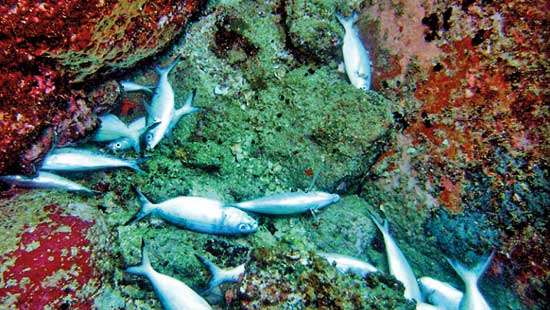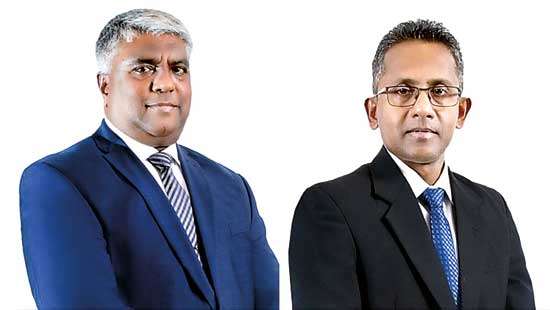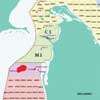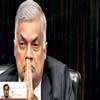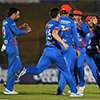This two-part article outlines the background and traces the course of events that led to the launching of the ADMK in Tamil Nadu by MGR 50 years ago
By
D.B.S. Jeyaraj
17 October 1972 was a Tuesday. Fifty years ago on that auspicious day, a new political party was launched in the South Indian state of Tamil Nadu. The founder and pioneering leader of that party – which celebrated its golden jubilee a few days ago- was the well-known film actor turned politician Maruthur Gopalan Ramachandran known popularly as MGR by his magical initials.
The new party at its inception was named Anna -Dravida Munnetra Kazhagam (ADMK). It was later changed to All India Anna Dravida Munnetra Kazhagam (AIADMK)
M.G. Ramachandran or MGR had been for two decades, a stalwart of the Dravida Munnetra Kazham (DMK) meaning Dravidian Progressive Federation in English. The DMK at that time was the ruling party in Tamil Nadu. MGR was the party treasurer.
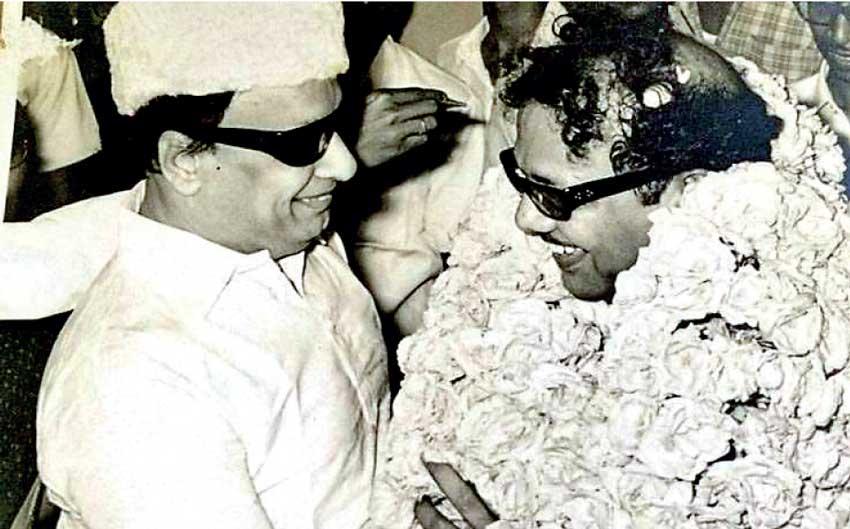
MGR (L) and Karunanidhi (R)
However, M.G. Ramachandran was formally expelled from the DMK on October 10, 1972 for allegedly violating party discipline. MGR launched the Anna-Dravida Munnetra Kazhagham (ADMK) a week later on the 17th. In forming his new party MGR retained the name of DMK with an added prefix – Anna derived from the DMK founder-leader C.N. Annadurai popularly referred to as ‘Anna’.
MGR later amended the Anna-DMK to AIADMK or All-India Anna Dravida Munnetra Kazhagham in 1976.
MGR caused much mirth among political pundits when he stated that his party ideology was a blend of “Capitalism, Socialism and Communism”. He called it ‘Annaism’ after Annadurai as in the instances of Marx – Marxism or Mao – Maoism.
MGR had the last laugh on his detractors when his party romped home as winners in the 1977 elections MGR became Chief Minister of Tamil Nadu. His followers who dubbed him earlier as Puratchi Nadigar or Revolutionary Actor now hailed him as Puratchy Thalaiver (Revolutionary Leader).
MGR was elected Chief Minister again in 1980 and 1985 after his party won at the polls. During his tenure as Chief Minister, the actor-politico introduced many populist, welfare measures. Chief among them was the Sathunavu (nutritious meals) scheme where healthy meals were given free to students at schools.
MGR died in harness
|
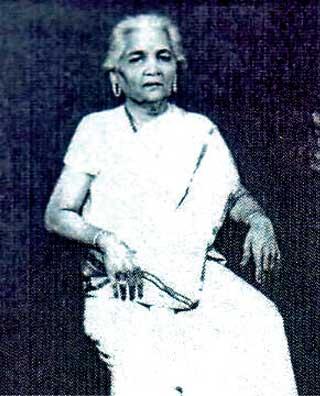
MGR’s mother Sathiyabama
|
MGR died in harness as Chief Minister in 1987. Prime Minister Rajiv Gandhi bestowed upon him posthumously the Bharat Ratna which is the highest civilian honour in India.
After MGR’s demise on 24 December 1987, his wife Janaki Ramachandran succeeded him as Chief Minister for a brief spell of 24 days in January 1988.
MGR’s party fragmented into two with wife Janaki leading one faction and paramour Jayalalithaa Jayaram the other.
Later Janaki bade adieu to politics and both factions united under MGR’s former leading lady, Jayalalithaa led MGR’s party to victory in the elections of 1991, 2001, 2011 and 2016.
Jayalalithaa symbolised the transition of the ADMK from the MGR era to the present. It was MGR who had, as Chief Minister, inducted Jayalalithaa into politics. She was hailed as MGR’s political heir and was called Puratchi Thalaivi – the feminine equivalent of Revolutionary Leader.
In later years she was known as Amma (mother/madam). It has been said in a lighter vein that MGR was the only Tamil Nadu Chief Minister whose wife as well as paramour succeeded him as Chief Minister. Jayalalithaa passed away unexpectedly in December 2016.
She was succeeded as Chief Minister for a brief period by O. Panneerselvam (aka OPS), who had on two earlier occasions served as ‘Acting’ Chief Minister. Panneerselvam was replaced by Edappaadi K. Palaniswamy (aka EPS) as Chief Minister.
The ADMK lost the 2021 elections and Palaniswamy became the Leader of the Opposition.
The party was under the dual leadership of Palaniswamy and Panneerselvam. Deep divisions emerged within the ADMK this year after Palaniswamy attempted to exercise sole control of the party. Panneerselvam has been resisting this by resorting to legal action. A big question mark hangs over the future of the party.
The internal feud and prevailing state of uncertainty have been a dampener in the ADMK celebrating its 50th anniversary on a grand scale though some events have been held.
India is Sri Lanka’s nearest neighbour and among the Indian states, it is Tamil Nadu that is closest to the island. Tamil Nadu meaning Tamil Land/Country is home to more than 72 million people.
Since 1967, Tamil Nadu has been ruled by either the DMK or the ADMK. The DMK was in power from 1967 to 76, 1989 to 1991,1996 to 2001, 2006 to 2011 and from 2021 to date. The ADMK ruled from 1977 to 1988. 1991 to 96, 2001 to 2006 and 2011 to 2021.
Though an off-shoot of the DMK, the ADMK/AIADMK has been ruling Tamil Nadu for a longer period than the DMK.
It is against this backdrop therefore that this column focuses on the birth of the Anna-DMK 50 years ago.
I have been taking a keen interest in the politics of India in general and Tamil Nadu in particular from my school days.
I was in the GCE (AL) class when MGR got expelled from the DMK and started the ADMK in October 1972. I can remember eagerly devouring newspapers and magazines and listening avidly to the radio to know all about this issue then.
Those were exciting times indeed. I shall therefore in this two-part article, outline the background and trace the course of events that led to the launching of the ADMK in Tamil Nadu by MGR 50 years ago.
Annadurai aka Anna
The DMK won the 1967 elections and captured power for the first time in what was known as the state of Madras then. The DMK was the first-ever regional party to form an administration in any state in India.
Conjeevaram Natarajan Annadurai known as Anna became Chief Minister and formed a nine-member cabinet comprising himself, Madhavan, Govindaswamy, Nedunchezhiyan, Karunanidhi, Mathiyazhagan, Sadeeq Pasha, Muthuswamy and Ms Satyavanimuttu. It was the DMK which changed the name of the state from Madras to Tamil Nadu.
The DMK leader and Tamil Nadu Chief Minister Annadurai died of cancer on February 3, 1969. The then Education Minister V.R. Nedunchezhiyan became Acting Chief Minister. Nedunchezhiyan was a senior DMK leader who had been associated with Annadurai in founding the party in 1949. Nedunchezhiyan was the chairman of the DMK General Council and widely regarded as Annadurai’s would-be successor as Chief Minister.
It is believed that the well-educated Nedunchezhiyan was Annadurai’s personal choice though the latter had never explicitly stated so.
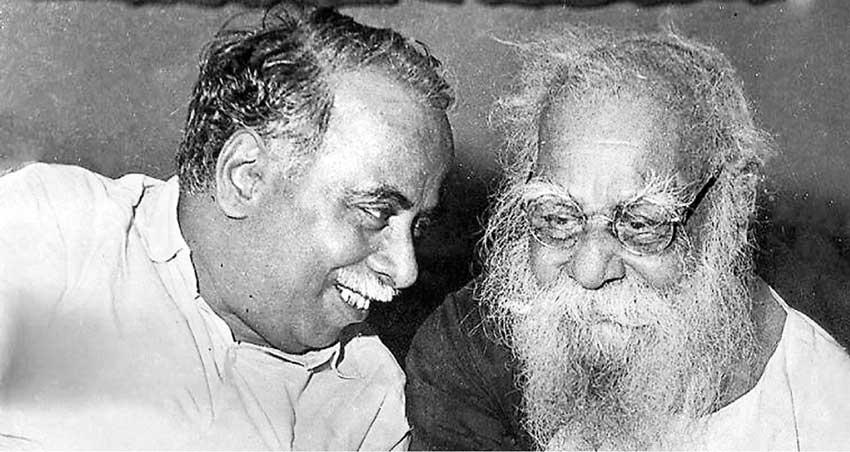
Annadurai (L) and E.V. Ramaswamy (R)
Muttuvel Karunanidhi
The ambitious Muttuvel Karunanidhi, who was the minister of public works in the DMK Cabinet had different ideas.
Karunanidhi was a brilliant writer who had successfully written screenplays and dialogues for a large number of Tamil films. Though less educated than Nedunchezhiyan, Karunanidhi was more popular with the DMK rank and file.
Karunanidhi was easygoing and accessible whereas Nedunchezhiyan was aloof and less sociable. Karunanidhi staked his claim for the Chief Minister post. Nedunchezhiyan was unwilling to give in. The party seemed to be heading for a split.
Karunanidhi sought MGR’s assistance. The famous actor was highly popular within party ranks at multiple levels. MGR supported Karunanidhi for the Chief Ministership bid. He used his charismatic influence within the party to strengthen Karunanidhi’s claim. The then speaker SB Aadithan who owned the widely read newspapers Thinathandhi and Maalaimurasu also backed Karunanidhi known as Kalaignar (Artiste). The combined onslaught of Karunanidhi, AAdithan and MGR was too much for Nedunchezhiyan to handle. He caved in.
On February 9, the DMK members of the Legislative Assembly elected Muttuvel Karunanidhi alias Kalaignar as the DMK leader in the legislature and nominated him for the Chief Minister post.
Karunanidhi was sworn in as Tamil Nadu Chief Minister on 10 February 1969. The new Chief Minister re-appointed all the previous ministers to his cabinet. Nedunchezhiyan however refused the Ministership. He and his disgruntled supporters began contemplating breaking away and forming a new party.
The politically astute Karunanidhi played his cards well. Instead of alienating Nedunchezhiyan further, Karunanidhi reached out to him. He met Nedunchezhiyan face to face and persuaded him to re-join the cabinet.
Nedunchezhiyan did so and became a minister under Chief Minister Karunanidhi.
Karunanidhi then went one step further. He revised the party constitution and restructured its hierarchy.
When Annadurai and his followers split from the Dravida Kazhagam (DK) and formed the DMK in 1949 they continued to treat their erstwhile leader and political mentor – E.V. Ramaswamy known as Eevaeraa and Periyaar – with awe and reverence.
The DMK constitution did not provide for a party President. Annadurai had emotionally stated then that Periyaar was their one and only leader and that the party presidency would be unfilled until Periyaar joined them and took it over.
This never happened and the DMK and DK were functioning separately for 20 years.
Karunanidhi was easygoing and accessible whereas Nedunchezhiyan was aloof and less sociable. Karunanidhi staked his claim for the Chief Minister post. edunchezhiyan was unwilling to give in. The party seemed to be heading for a split
MGR Elected Treasurer
Now, Karunanidhi took a bold step. He dispensed with the practice of keeping the party President post vacant for Periyaar.
On 27 July 1969, the DMK party convention formally elected Chief Minister Karunanidhi as party President. In a significant move indicating that intra-party divisions had been resolved, Nedunchezhiyan was made Secretary. MGR was elected party Treasurer.
The new triumvirate ruling the DMK was Karunanidhi, Nedunchezhiyan and Ramachandran. The role played by MGR in thwarting Nedunchezhiyan and “installing” Karunanidhi had demonstrated that the actor-politico was going to be the power behind Karunanidhi’s throne.
During Karunanidhi’s early Chief Minister tenure, MGR began throwing his weight around in matters of administration. Kalaignar Karunanidhi resented this but seemed helpless as he was under obligation to MGR. Besides the popularity and support enjoyed by the actor could not be discounted easily.
1971 Elections
Then came the 1971 elections. There had been a crisis in the Congress Party ruling India. Prime Minister Indira Gandhi was at loggerheads with a group of senior Congress leaders nicknamed the syndicate. These veterans had been instrumental in appointing Indira as Premier and expected her to be their puppet. But Indira revolted. There was a split and Indira Gandhi lost her Parliamentary majority. She ran a minority Govt with support from regional parties like the DMK.
Indira Gandhi in a decisive move dissolved the Lok Sabha in early 1971 and opted for fresh polls. She hoped to gain an absolute majority in the elections. Karunanidhi in a very smart move dissolved the Tamil Nadu Legislative Assembly also. Elections to the Indian Parliament as well as the Tamil Nadu legislature were to be held together.
Recognizing shrewdly that Indira’s priority was to command a majority in Parliament, Karunanidhi entered into an electoral arrangement with Indira Gandhi. The DMK would allocate ten seats in Tamil Nadu and Pondicherry (now Puducherry) to the Congress but the party could not contest any of the 234 assembly seats in Tamil Nadu.
Though Congress party leaders in Tamil Nadu protested, Indira agreed to Karunanidhi’s conditions because Parliament seats were more important to her at that time.
The election results saw the Congress Party sweeping India and getting a two-thirds majority. Likewise, its electoral ally DMK won grandly in Tamil Nadu. Out of 39 Lok Sabha seats in the state, the DMK-Congress combine got 38.
Moreover, the DMK and its allies obtained 204 of the 234 legislature seats. Of these, the DMK share was an astounding 184. An elated Karunanidhi was to crow triumphantly that DMK rule cannot be shaken for the next 25 years.
Initially, Karunanidhi had not wanted MGR to play a prominent role in electioneering. He wanted to reduce his dependency on the actor. But party seniors demurred saying MGR was indispensable for party propaganda.
MGR played a huge role in the magnificent 1971 DMK victory. He had ardently campaigned for the party through the length and breadth of the stare.
Furthermore, some of the DMK candidates were MGR loyalists and nominees. MGR helped finance their campaigns and canvassed intensely for them. They all won handsomely.
After the results were announced several winners were more interested in posing for photographs with MGR than with Karunanidhi (there were no selfies then). MG Ramachandran himself won again in his Parangimalai (St.Thomas Mt) constituency polling more than 65,000 votes.
Actor Wanted to be a Minister
When Karunanidhi began forming his new cabinet, MGR made a request. The actor wanted to be a Minister. The remarkable political success enjoyed by the actor seemed to have whetted his appetite for more power and greater responsibility.
A shocked Karunanidhi refused saying MGR could not act in films and be a cabinet minister at the same time. MGR persisted with his request and reminded Karunanidhi that he owed his Chief Ministership to him. Karunanidhi responded by saying that the resounding victory in 1971 had given him the mandate to be Chief Minister in his own right and that he owed MGR nothing.
Karunanidhi reiterated that MGR must choose between being an actor and a minister. MGR was not prepared to give up his film career but his relationship with Karunanidhi had soured permanently. An intra-party cold war ensued between both.
Meanwhile, the prevailing political rapport between the DMK and Congress started declining. DMK chief Karunanidhi began complaining that the Central Govt of Indira Gandhi was not allocating sufficient funds to Tamil Nadu. After deriving much propaganda mileage out of such complaints, Karunanidhi engaged in the controversial act of removing the prohibition. The consumption and manufacture of liquor had been banned in 1938 during British rule when the state was part of the Madras Presidency. This was in deference to Mahatma Gandhi’s wishes.
Abolishing Prohibition
Now after 33 years, Karunanidhi wanted to abolish prohibition. He justified his action on the grounds that the New Delhi Govt was not adequately providing funds for development and that the state needed the potential revenue of alcoholic beverage taxation.
This was not to MGR’s liking. The actor who consistently portrayed a puritan screen image seemed to have been genuinely appalled at that time. (That he encouraged liquor manufacture later as Chief Minister is another story).
MGR never drank or smoked on-screen or off-screen. He only pretended to be drunk in a few film roles.
So, MGR pleaded with Karunanidhi not to go ahead with the lifting of the prohibition. Karunanidhi refused. Prohibition was lifted officially in Tamil Nadu on August 30, 1971.
Arrack bars and toddy taverns were opened widely. The owners were mostly DMK politicians. September 15th was the birthday of DMK founder Annadurai known widely as Anna.
MGR was the owner of a film studio in Chennai named Sathya Studios. He had bought the old Neptune Studios and re-named it after his mother Sathiyabahma.
On September 15, 1971, MGR led his Sathya Studio employees in a procession to the Annadurai memorial at Marina Beach and took an oath against liquor consumption.
While the DMK President was promoting liquor to enhance the state’s treasury, the party treasurer was taking a public pledge disavowing liquor consumption. In this way, a strong message was conveyed by MGR to Karunanidhi.
Karunanidhi-MGR Cold War
The Karunanidhi-MGR cold war continued even as both maintained in public the façade of being close friends and comrades. There were however several incidents that increased Karunanidhi’s resentment.
One such instance was a DMK public meeting at Madurai town where MGR addressed the large gathering before Karunanidhi was to speak. MGR left soon after speaking instead of waiting until Karunanidhi spoke.
As if on cue about half of the audience left along with MGR, without waiting to listen to Karunanidhi’s speech. Only about 50% of the original crowd remained thereby indicating MGR’s hold over the masses. Karunanidhi was humiliated.
The wily Karunanidhi now devised a plan to undermine MGR. Since MGR’s popularity was due to his film actor image, Karunanidhi hatched a plot through which he thought the MGR magic would gradually diminish. He wanted to fight fire with fire. Karunanidhi’s weapon in this venture was his son.
Eldest son M.K. Muthu
Karunanidhi’s eldest son was M.K. Muthu. He was the son of Karunanidhi’s first wife Padmavathy, who died after giving birth to Muthu. Karunanidhi had later married Dayalu the mother of present Tamil Nadu Chief Minister M.K. Stalin and former cabinet minister M.K. Azhagiri.
He also married a third wife Rajathi, whose daughter Kanimozhi is a Lok Sabha MP.
Muthu whose maternal uncle was the well-known playback singer Chidambaram Jayaraman had a good singing voice. He was quite good-looking and bore a slight resemblance to MGR in his younger days. Karunanidhi planned to promote Muthu as a film hero in a bid to counter MGR.
Muthu born in 1948 was in his early twenties while MGR born in 1917 was in his mid-fifties then. Karunanidhi wanted the younger Muthu to eclipse the older MGR as a film star. This in turn would reduce MGR’s political clout.
Karunanidhi’s nephew Murasoli Maaran began producing a film in October 1971 starring M.K. Muthu as the hero.
The film was named Pillaiyo Pillai (Oh, What a son).
Karunanidhi himself wrote the story, screenplay and dialogues for the film despite being Chief Minister. Muthu had a dual role in the film. He modelled himself like MGR in the film sporting the same hairstyle, mannerisms and dress code.
Pillaiyo Pillai was released on June 23, 1972 and was a commercial success.
Bull by its Horns
M.G. Ramachandran read the writing on the wall. He realised that the M.K. Muthu phenomenon was a conspiracy to reduce his stature within the party and destroy him politically.
MGR who subdued a raging bull on screen in the film Thaaikkuppin Thaaram resolved to take the bull by its horns. What happened thereafter inclusive of the particular circumstances leading to the birth of the ADMK political party will be narrated in detail in the second part of this article.
D.B. S. Jeyaraj can be reached at dbsjeyaraj@yahoo.com






